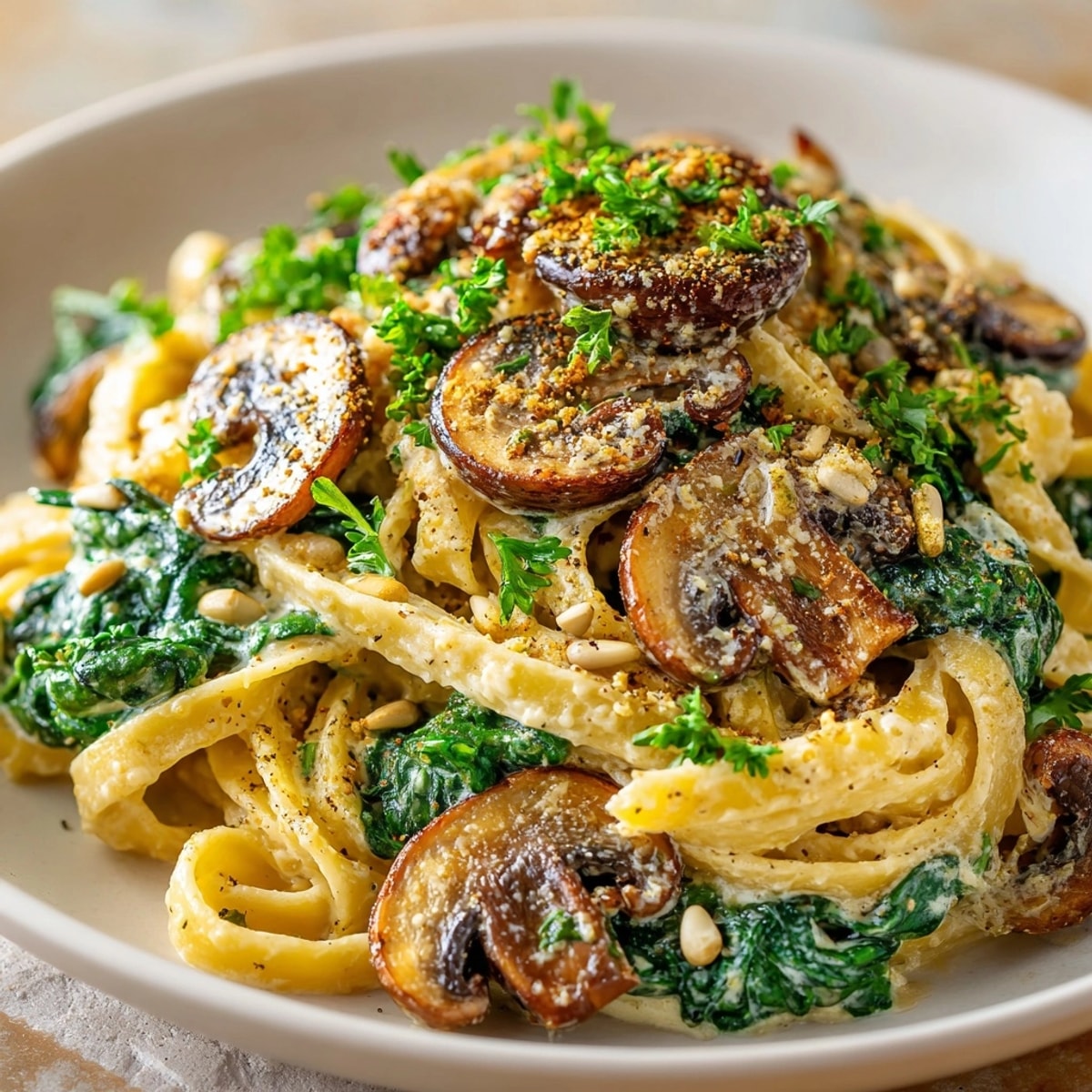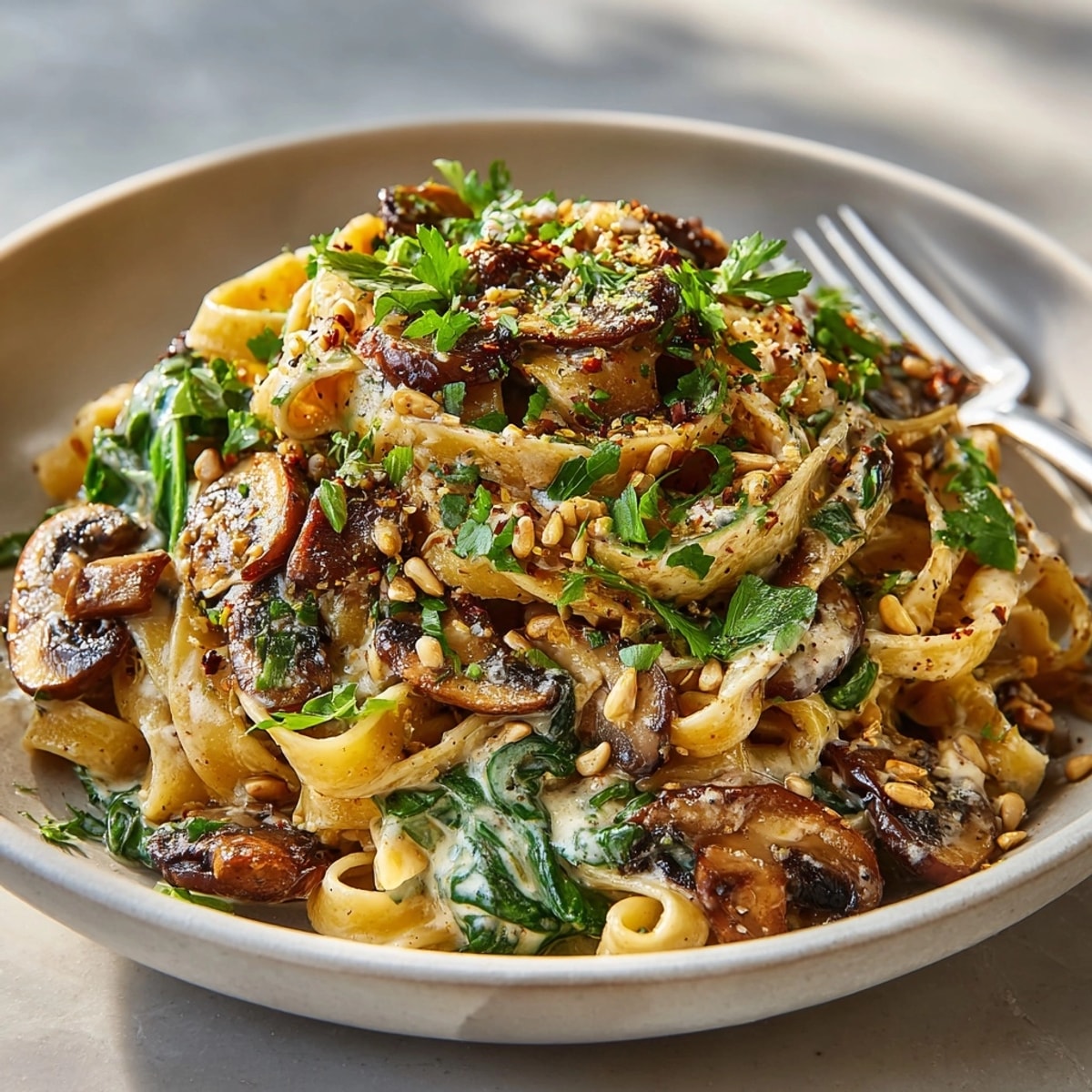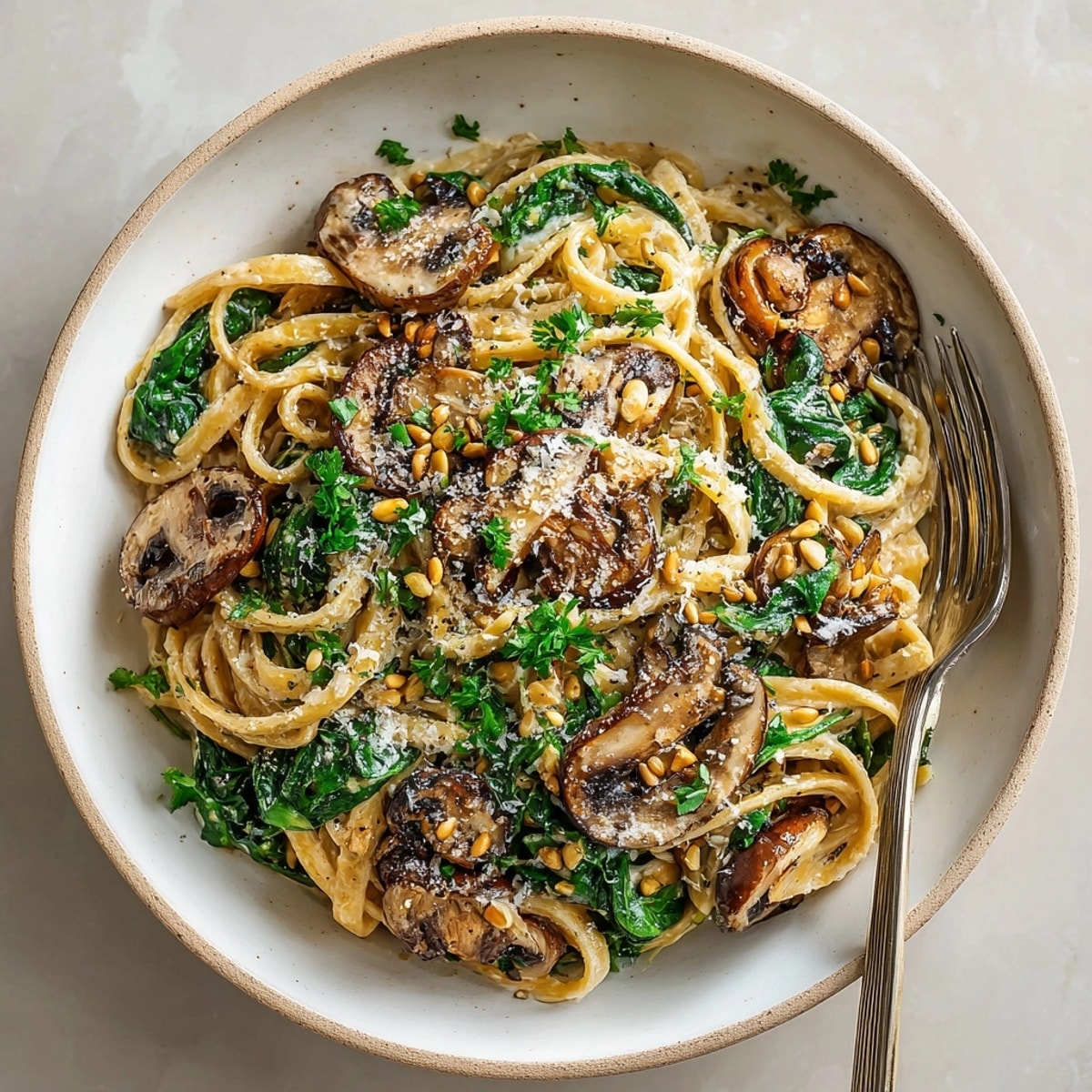 Save
Save This adaptogenic mushroom pasta has become my evening ritual on stressful days when I need both nourishment and calm. The earthy mushrooms paired with stress-relieving herbs create a comforting meal that soothes both body and mind while still delivering incredible flavor.
I first created this recipe during a particularly demanding work period when I needed meals that could support my nervous system. Now it's become my go-to comfort food that actually makes me feel better after eating.
Ingredients
- Whole wheat fettuccine: provides satisfying texture and complex carbs for sustained energy
- Cremini mushrooms: deliver earthy flavor and meaty texture perfect for this dish
- Shiitake mushrooms: contain natural compounds that support immune function
- Ashwagandha powder: an adaptogen traditionally used to help the body manage stress
- Reishi mushroom powder: offers immune support and has been used for centuries in Eastern medicine
- Holy basil: adds subtle flavor while traditionally used to promote calm
- Nutritional yeast: creates cheesy flavor without dairy and adds B vitamins
- Plant-based milk: makes the sauce creamy while keeping it light and digestible
Instructions
- Cook the Pasta:
- Bring a large pot of generously salted water to a rolling boil. Add whole wheat fettuccine and cook according to package instructions until al dente, usually 8 to 10 minutes. Stir occasionally to prevent sticking. Before draining, reserve half a cup of the starchy pasta water to help thicken the sauce later. Drain pasta in a colander but do not rinse as the starches help the sauce adhere.
- Prepare the Aromatics:
- While pasta cooks, warm olive oil in a large skillet over medium heat until it shimmers but doesn't smoke. Add finely chopped onion and cook for 2 to 3 minutes, stirring frequently with a wooden spoon. The onions should become translucent and soft but not browned. Add minced garlic and cook for another 30 seconds until fragrant, being careful not to burn it.
- Sauté the Mushrooms:
- Add both cremini and shiitake mushrooms to the skillet with the aromatics. Spread them in an even layer and let them cook undisturbed for 2 minutes to develop color. Then stir and continue cooking for another 4 to 6 minutes. The mushrooms will first release moisture and then begin to caramelize, developing a rich golden color and concentrated flavor. They should reduce in volume by about half.
- Incorporate Adaptogenic Herbs:
- Reduce heat to medium-low and add the ashwagandha powder, reishi mushroom powder, holy basil, lemon balm, black pepper, and sea salt directly to the mushroom mixture. Stir continuously for one full minute to toast the herbs and spices gently, releasing their volatile oils and aromas. This step is crucial for activating the beneficial compounds in the adaptogenic herbs.
- Create the Sauce:
- Pour in the plant-based milk and vegetable broth, scraping any browned bits from the bottom of the pan. Add nutritional yeast and stir until completely dissolved. Bring the mixture to a gentle simmer, not a full boil, to prevent the plant milk from separating. Cook for 4 to 5 minutes, stirring occasionally, until the sauce coats the back of a wooden spoon.
- Finish the Dish:
- Add chopped spinach to the sauce and stir until it wilts completely, about one minute. Squeeze in fresh lemon juice and stir to brighten the flavors. Add the drained pasta directly to the skillet and use tongs to thoroughly coat every strand with the creamy sauce. If the sauce seems too thick, add the reserved pasta water a tablespoon at a time until you reach your desired consistency.
 Save
Save The reishi mushroom powder is perhaps my favorite ingredient in this recipe. Known as the "mushroom of immortality" in traditional Chinese medicine, it adds a subtle earthiness while potentially offering adaptogenic benefits. I keep a jar in my pantry specifically for adding to evening meals when I need extra support.
Understanding Adaptogens
Adaptogens are natural substances that may help your body adapt to stress and promote normal physiological function. The combination of ashwagandha, reishi, holy basil, and lemon balm in this pasta creates a gentle but effective blend that supports the nervous system. These herbs have been used for centuries in traditional medicine systems worldwide. While they won't eliminate stress completely, they may help your body respond more effectively to daily pressures when consumed regularly as part of a balanced diet.
Mushroom Selection Guide
For the best flavor profile in this pasta, use fresh mushrooms rather than canned varieties. Look for cremini mushrooms that feel firm and dry, not slimy or spotted. Shiitake mushrooms should have caps that curl slightly under and stems that aren't too woody. If fresh shiitakes are unavailable, dried ones work wonderfully after rehydrating in hot water for 20 minutes. Save that soaking liquid to replace some of the vegetable broth in the recipe for an even more intense mushroom flavor.
Make Ahead Options
This adaptogenic pasta reheats beautifully, making it perfect for meal prep. Prepare the entire dish up to three days ahead and store in airtight containers in the refrigerator. When reheating, add a splash of plant milk or water to revive the sauce, as the pasta will absorb liquid while storing. For freezer storage, freeze just the sauce without the pasta, then prepare fresh pasta when ready to serve. The adaptogenic properties remain intact after gentle reheating.
Seasonal Adaptations
Spring Version
Use fresh morel mushrooms when in season
Add tender asparagus tips in the final cooking stage
Incorporate fresh chives as a garnish
Summer Variation
Add halved cherry tomatoes in the final minute of cooking
Use fresh basil instead of dried holy basil
Top with lemon zest for brightness
Fall Interpretation
Include diced butternut squash sautéed until tender
Add a pinch of nutmeg to the sauce
Garnish with fried sage leaves
Success Stories
Many readers have shared how this pasta has become their go-to meal during stressful periods. One person mentioned making it weekly during final exams and noticing improved sleep quality. Another incorporated it into their evening routine during a challenging work project and reported feeling more balanced. While individual results with adaptogens vary, the combination of nourishing ingredients and mindful eating creates a powerful self-care ritual.
 Save
Save I learned this technique from an herbalist friend who changed how I cook with these powerful ingredients forever.
Recipe Questions
- → What adaptogenic mushrooms are used in this pasta?
The dish uses cremini and shiitake mushrooms, with added reishi mushroom powder for adaptogenic benefits.
- → Can other greens be substituted for spinach?
Yes, you may swap spinach for kale or other leafy greens such as chard for a similar texture and flavor.
- → How can I make the sauce creamier?
For a richer sauce, use cashew cream instead of plant-based milk, or blend in soaked cashews for extra creaminess.
- → Are the adaptogenic powders essential?
You can use a ready-made adaptogenic blend or omit the powders for a milder flavor, though the stress-relief aspect may decrease.
- → What pasta shapes work best?
Whole wheat fettuccine is recommended, but any pasta shape of your choice will complement the sauce and vegetables.
- → Is this suitable for a vegan diet?
Yes, the dish uses plant-based milk and nutritional yeast instead of dairy, making it fully vegetarian and vegan-friendly.